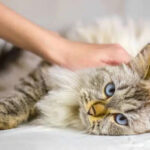Are you a cat lover wanting to fill your home with greenery without risking your furry friend’s health? You’ve come to the right place! At solcat.net, we understand the importance of creating a safe and beautiful environment for both you and your feline companion. Discover a variety of non-toxic indoor plants that will add life to your home while keeping your cat safe and happy. Let’s explore a purr-fectly curated selection of cat-friendly plants.
1. Why Choose Non-Toxic Plants for Your Cat-Friendly Home?
Cats, with their curious nature, often explore their surroundings by nibbling on things they find interesting. While this is a normal behavior, it can become dangerous if you have toxic plants in your home. Choosing non-toxic plants is essential for your cat’s safety and well-being.
The Risks of Toxic Plants
Ingesting toxic plants can lead to various health issues for cats, ranging from mild discomfort to severe medical emergencies. Symptoms of plant poisoning in cats may include:
- Vomiting
- Diarrhea
- Drooling
- Loss of appetite
- Lethargy
- Difficulty breathing
- Seizures
In severe cases, some plants can even cause organ damage or death. According to the American Animal Hospital Association (AAHA), prevention is key when it comes to plant poisoning.
Creating a Safe Environment
By opting for non-toxic plants, you create a safer environment for your cat, allowing them to explore and interact with their surroundings without the risk of poisoning. This also gives you peace of mind, knowing that your beloved pet is protected.
2. Cat-Friendly House Plants: A Comprehensive List
Here is a detailed list of indoor plants that are safe for cats, ensuring your feline friend can coexist peacefully with your green companions:
Palms
Palms are excellent choices for adding a tropical touch to your home while remaining safe for your cat.
Kentia Palm (Howea forsteriana)
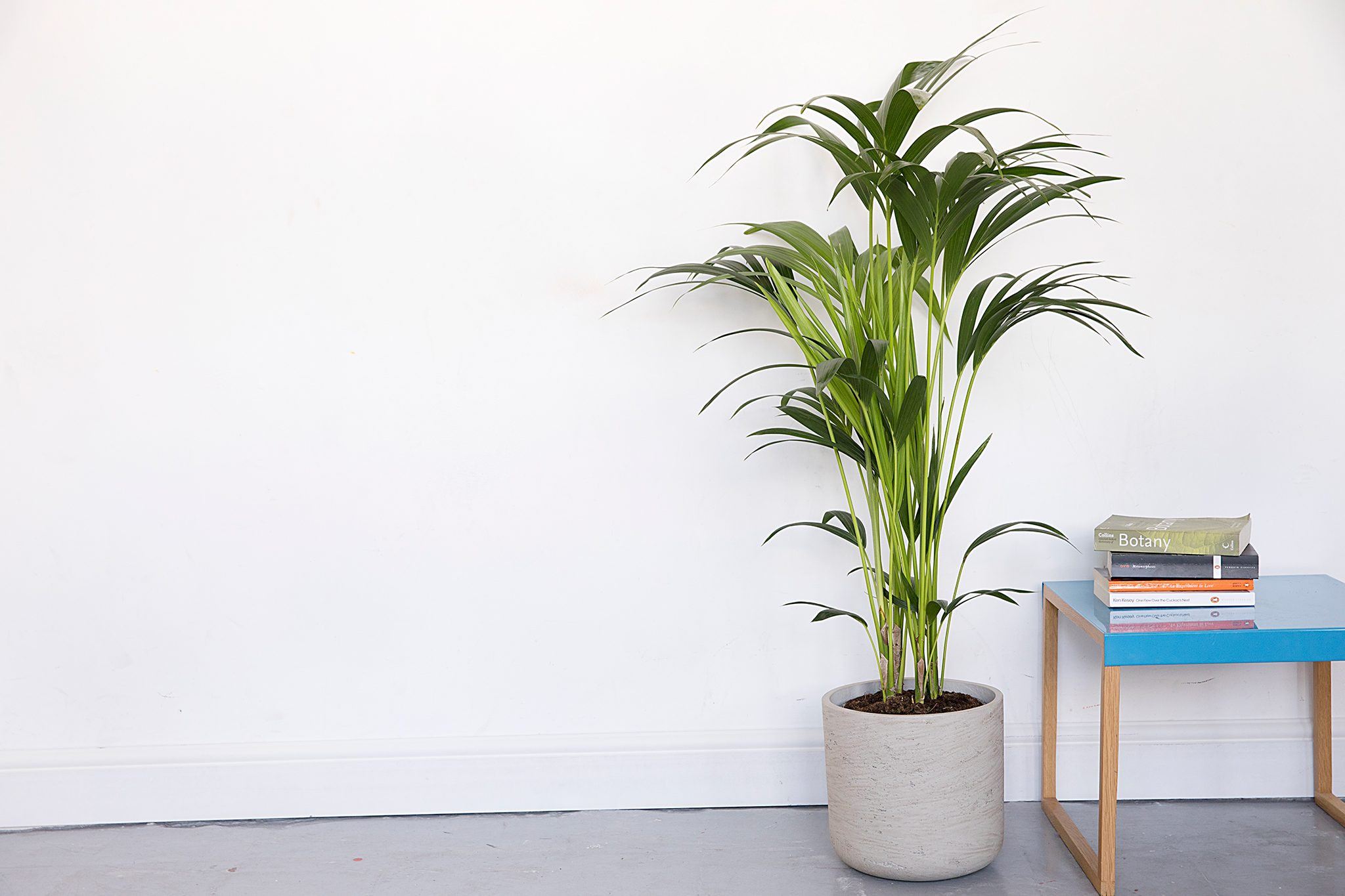 Kentia palm, Howea forsteriana
Kentia palm, Howea forsteriana
Kentia Palm, adding height and impact to any room with its exotic leaves is non-toxic, making it an ideal choice for cat owners.
Kentia palms are classic and elegant, perfect for adding height to any room. They thrive in bright, indirect light and require minimal maintenance. According to experts at the University of California, Davis, Kentia palms are non-toxic to cats, dogs, and horses, making them a safe and stylish addition to your home.
Care Tips:
- Light: Bright, indirect light
- Water: Keep the compost moist but avoid overwatering
- Humidity: Mist occasionally
Benefits: Adds height and elegance, air-purifying
Parlour Palm (Chamaedorea elegans)
 Parlour Palm. Getty Images.
Parlour Palm. Getty Images.
Parlour palm, a cat-friendly houseplant, adds height and impact to any room.
Parlour palms are another great option, known for their resilience and air-purifying qualities. They tolerate low light conditions and are relatively easy to care for. The ASPCA lists parlour palms as non-toxic to cats, ensuring your pet’s safety.
Care Tips:
- Light: Low to bright, indirect light
- Water: Water once a week in summer, less in winter
- Humidity: Average room humidity
Benefits: Easy to care for, air-purifying
Ferns
Ferns bring a touch of lush greenery to any space and are generally safe for cats.
Boston Fern (Nephrolepis exaltata)
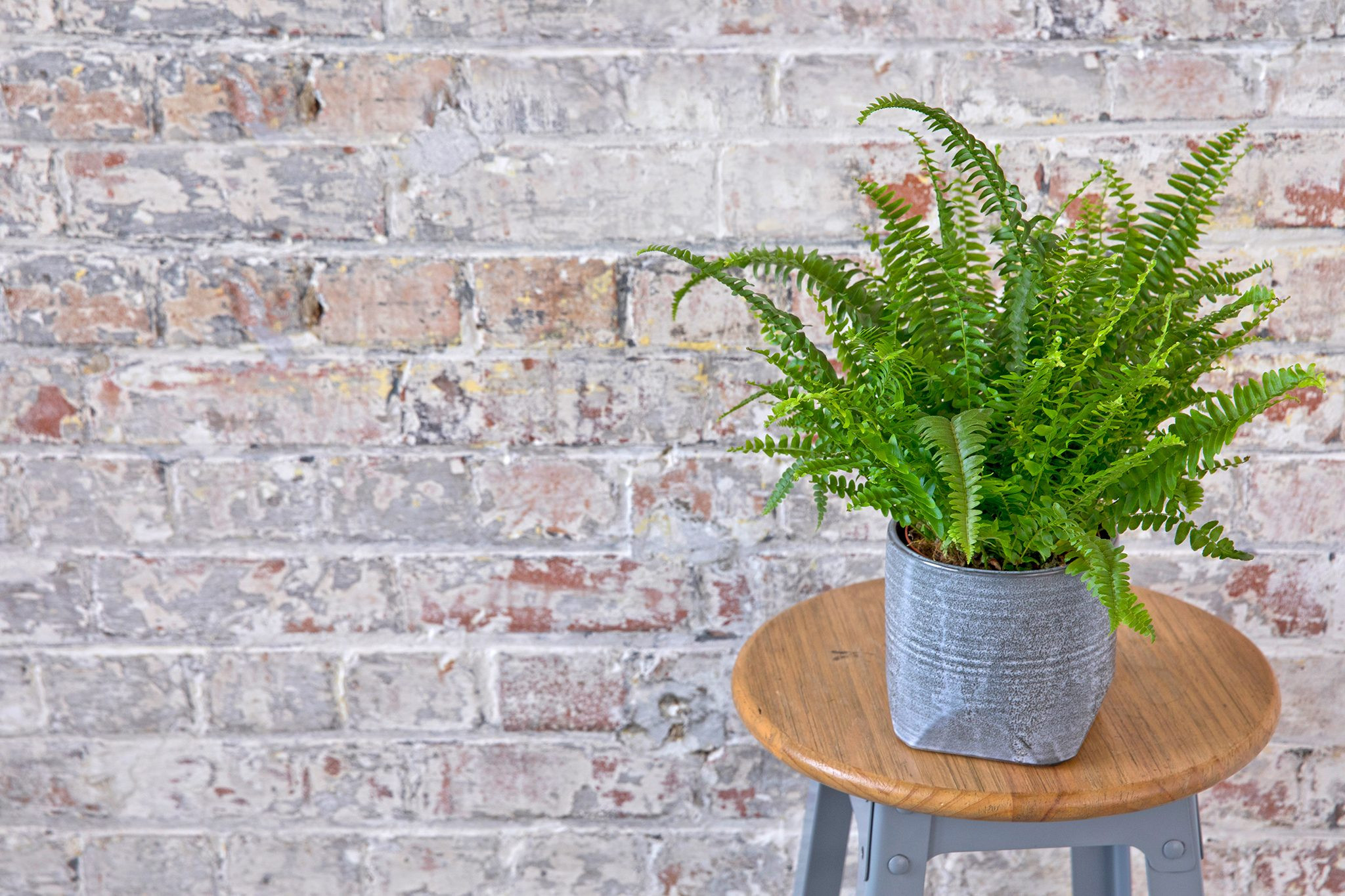 Boston Fern, Nephrolepis exaltata
Boston Fern, Nephrolepis exaltata
Boston fern, one of NASA’s top 10 air-purifying plants, safe for cats.
Boston ferns are popular for their feathery fronds and air-purifying properties. They thrive in humid environments and are listed as non-toxic to cats by the ASPCA.
Care Tips:
- Light: Indirect sunlight
- Water: Keep the soil consistently moist
- Humidity: High humidity, mist regularly
Benefits: Air-purifying, adds lush greenery
Maidenhair Fern (Adiantum raddianum)
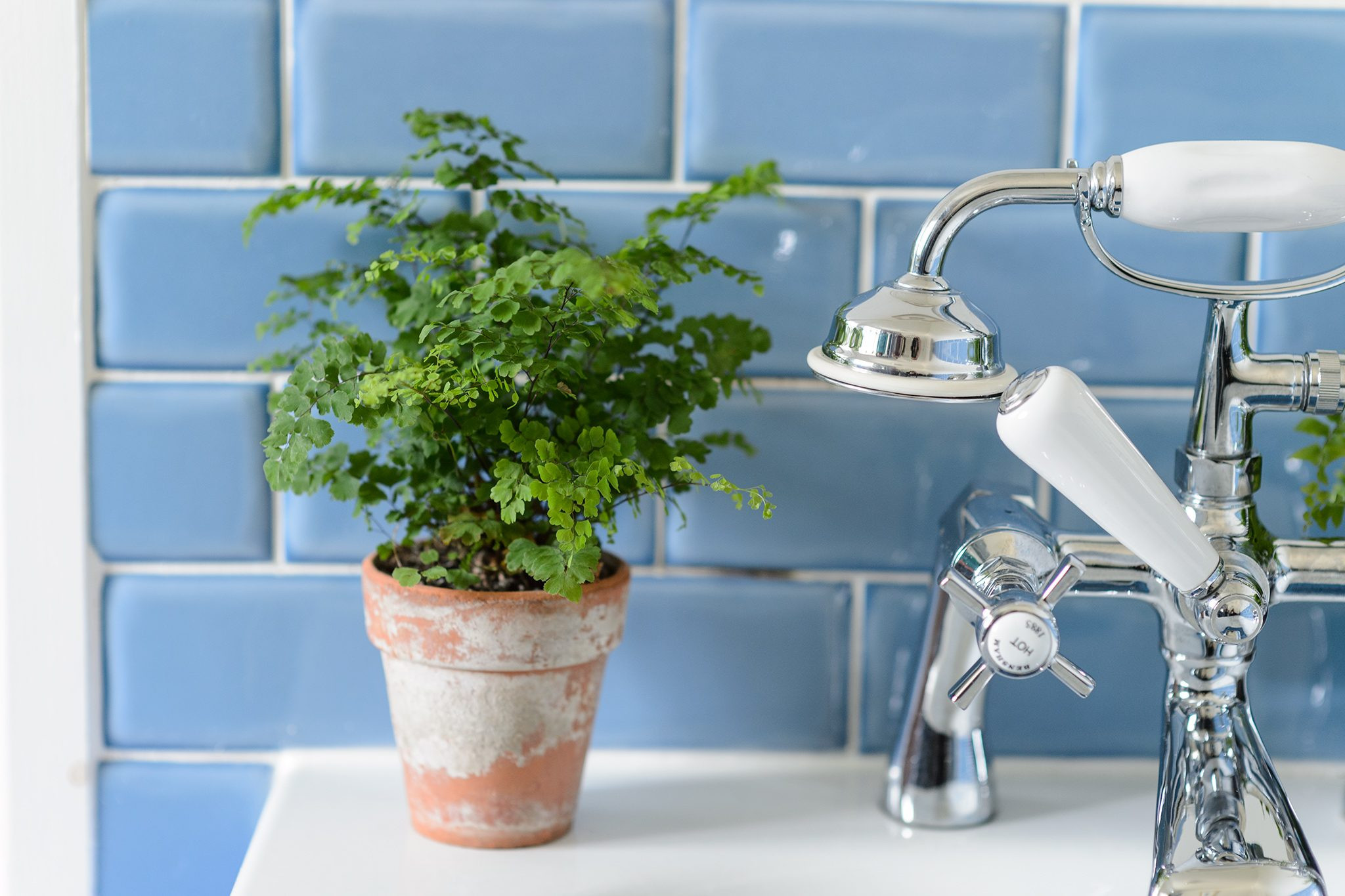 Maidenhair fern
Maidenhair fern
Maidenhair fern, perfect for a steamy bathroom, with graceful leaves on delicate arching stems.
Maidenhair ferns are delicate and graceful, ideal for adding a touch of elegance to your home. They require high humidity and consistent moisture. According to the ASPCA, maidenhair ferns are non-toxic to cats.
Care Tips:
- Light: Bright, indirect light
- Water: Keep the compost moist
- Humidity: High humidity, mist regularly
Benefits: Adds elegance, thrives in humid environments
Golden Polypody (Phlebodium aureum)
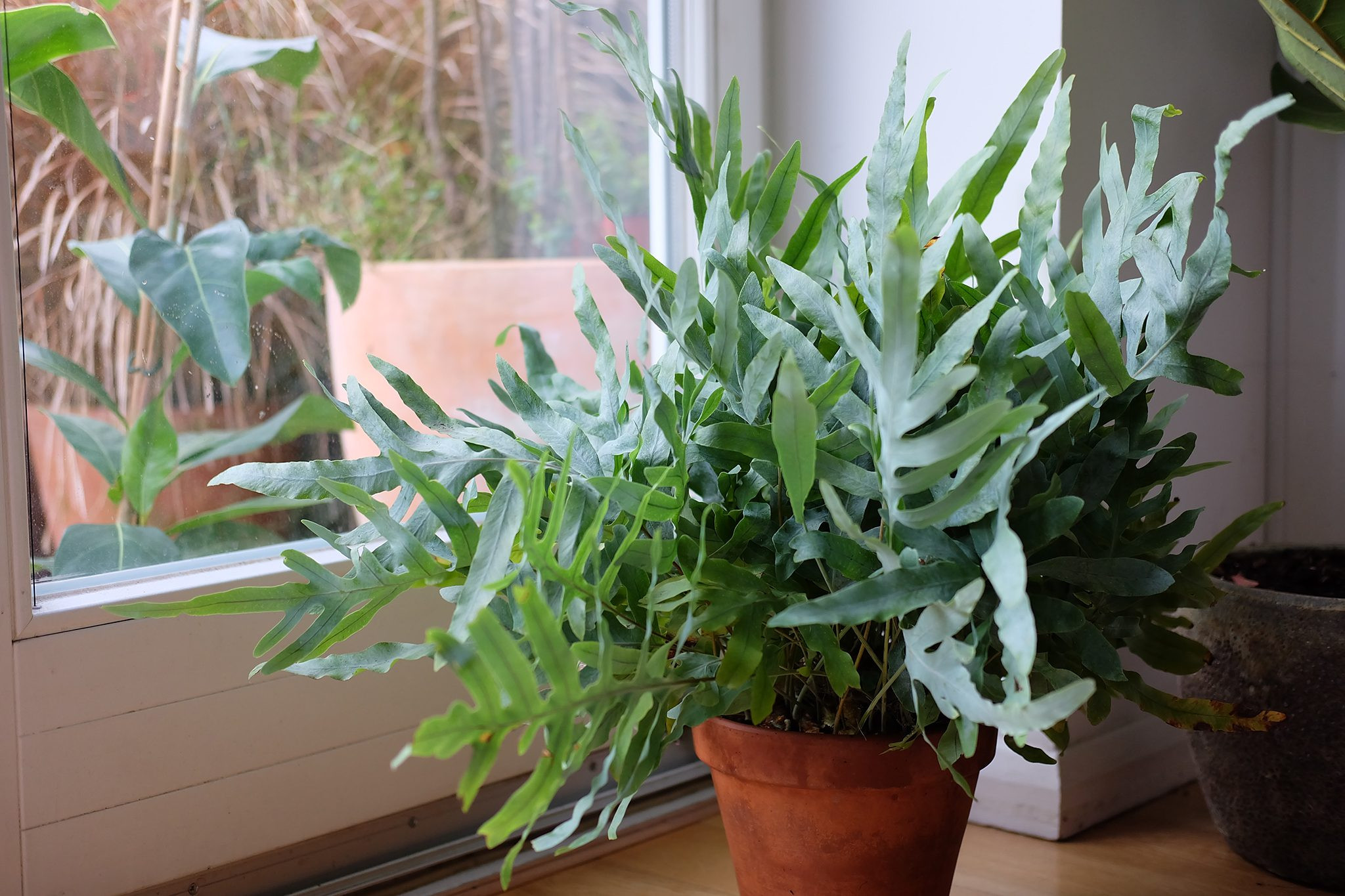 Phlebodium aureum
Phlebodium aureum
Golden polypody, with evergreen, blue-green leaves is a great house plant with year-round visual appeal.
Golden polypody ferns feature striking blue-green leaves and are relatively easy to care for. They prefer humid conditions and indirect light. The ASPCA confirms that golden polypody ferns are safe for cats.
Care Tips:
- Light: Indirect light
- Water: Keep the compost moist
- Humidity: High humidity, mist regularly
Benefits: Easy to care for, striking blue-green leaves
Succulents
Succulents are popular for their low maintenance and unique appearance.
Zebra Plant (Haworthia fasciata)
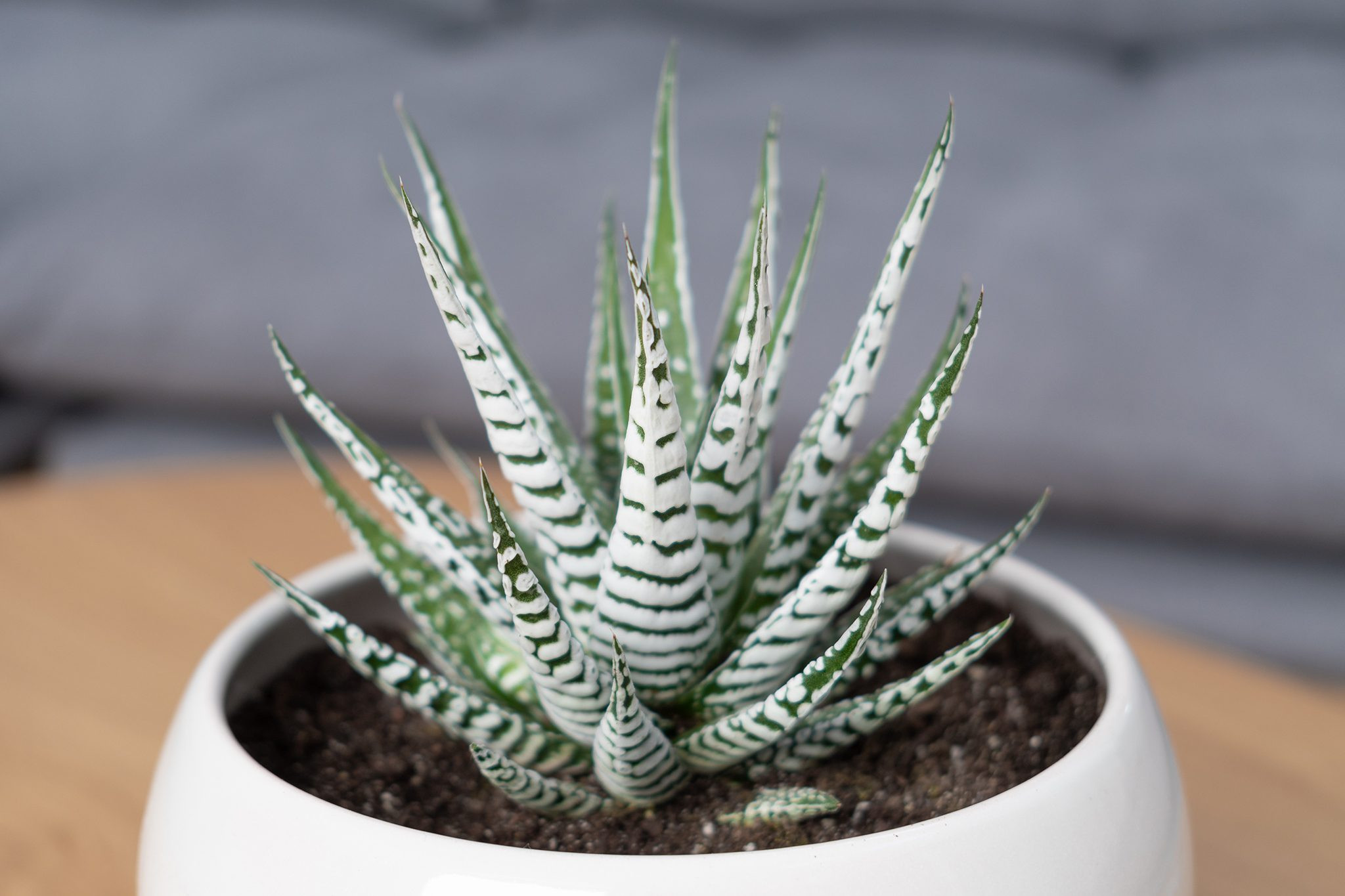 Haworthia fasciata, Zebra plant. Getty Images.
Haworthia fasciata, Zebra plant. Getty Images.
Zebra plant, a succulent safe for pets, makes a great addition to any home.
Zebra plants are small, striped succulents that add a touch of modern flair to any space. They are drought-tolerant and require minimal care. The ASPCA lists Haworthia fasciata as non-toxic to cats.
Care Tips:
- Light: Bright, indirect light
- Water: Water sparingly, allowing the soil to dry out between waterings
- Humidity: Low humidity
Benefits: Low maintenance, unique striped appearance
Flowering Plants
Add a splash of color to your home with these cat-friendly flowering plants.
Christmas Cactus (Schlumbergera)
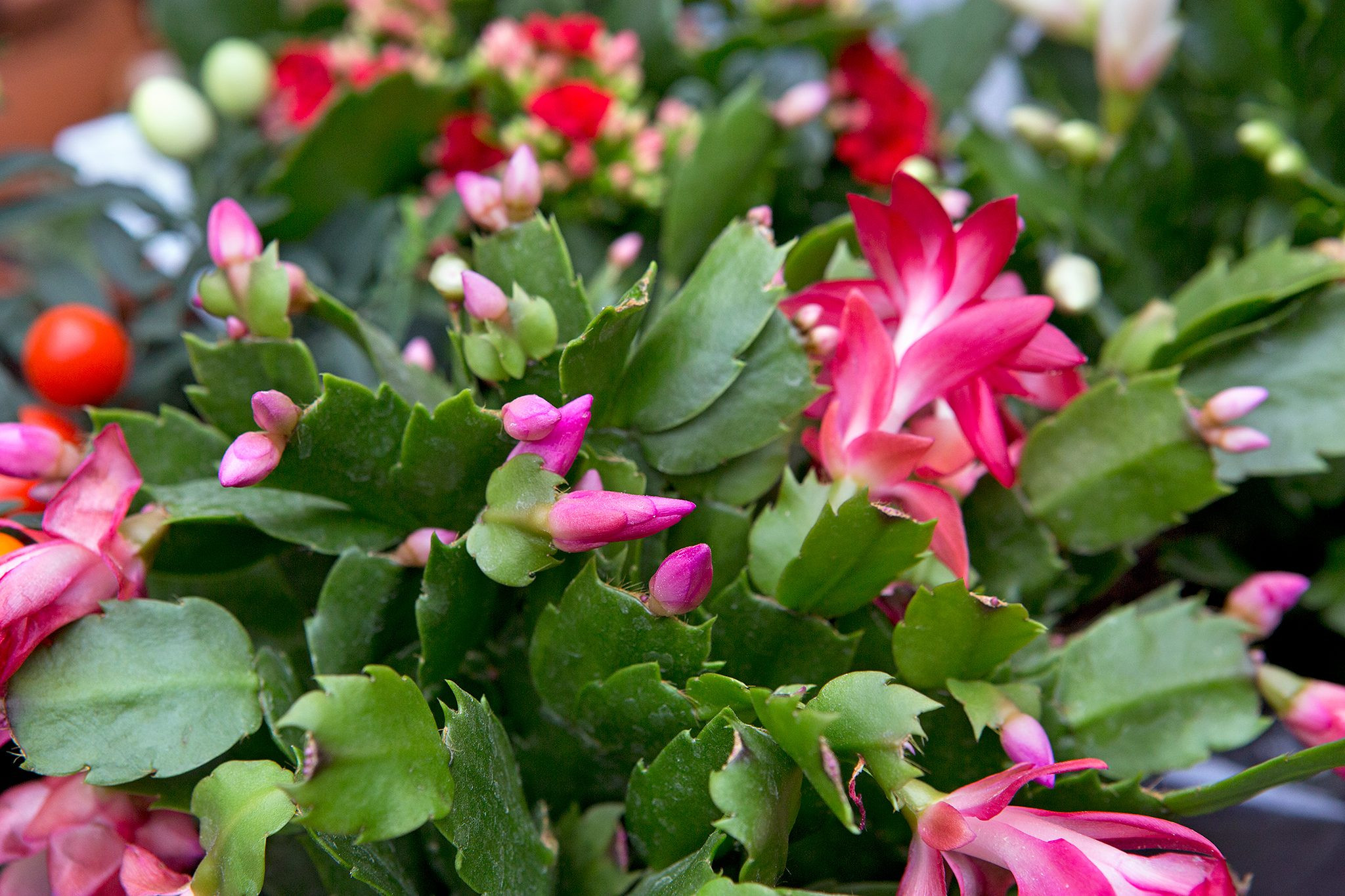 Christmas Cactus, Schlumbergera
Christmas Cactus, Schlumbergera
Christmas Cactus, with its festive blooms, offers a beautiful and safe addition to your home.
Christmas cacti are known for their vibrant blooms during the holiday season. They are relatively easy to care for and are considered non-toxic to cats, according to the ASPCA.
Care Tips:
- Light: Bright, indirect light
- Water: Keep the soil moist, but not soggy
- Humidity: Moderate humidity
Benefits: Beautiful blooms, easy to care for
Moth Orchid (Phalaenopsis)
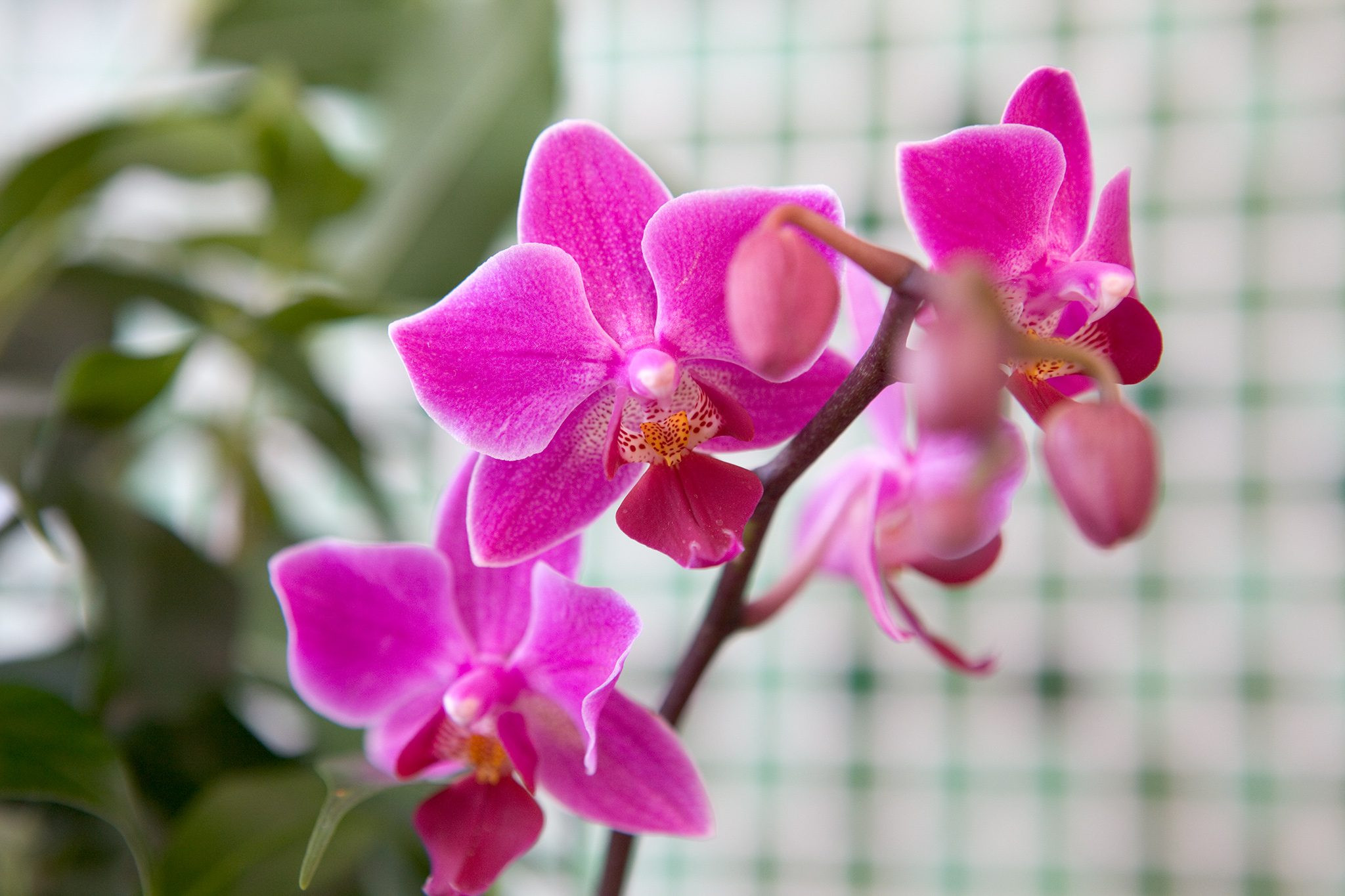 Moth orchid flowers
Moth orchid flowers
Moth orchid, with its exotic blooms, is a safe and elegant choice for cat-friendly homes.
Moth orchids are elegant and long-lasting, adding a touch of sophistication to any room. They prefer humid conditions and indirect light. The ASPCA lists Phalaenopsis orchids as non-toxic to cats.
Care Tips:
- Light: Indirect light
- Water: Water when the potting mix is dry to the touch
- Humidity: High humidity
Benefits: Long-lasting blooms, adds elegance
Other Safe Options
There are many other plants that are safe for cats, offering a wide variety of options for decorating your home.
Cast Iron Plant (Aspidistra elatior)
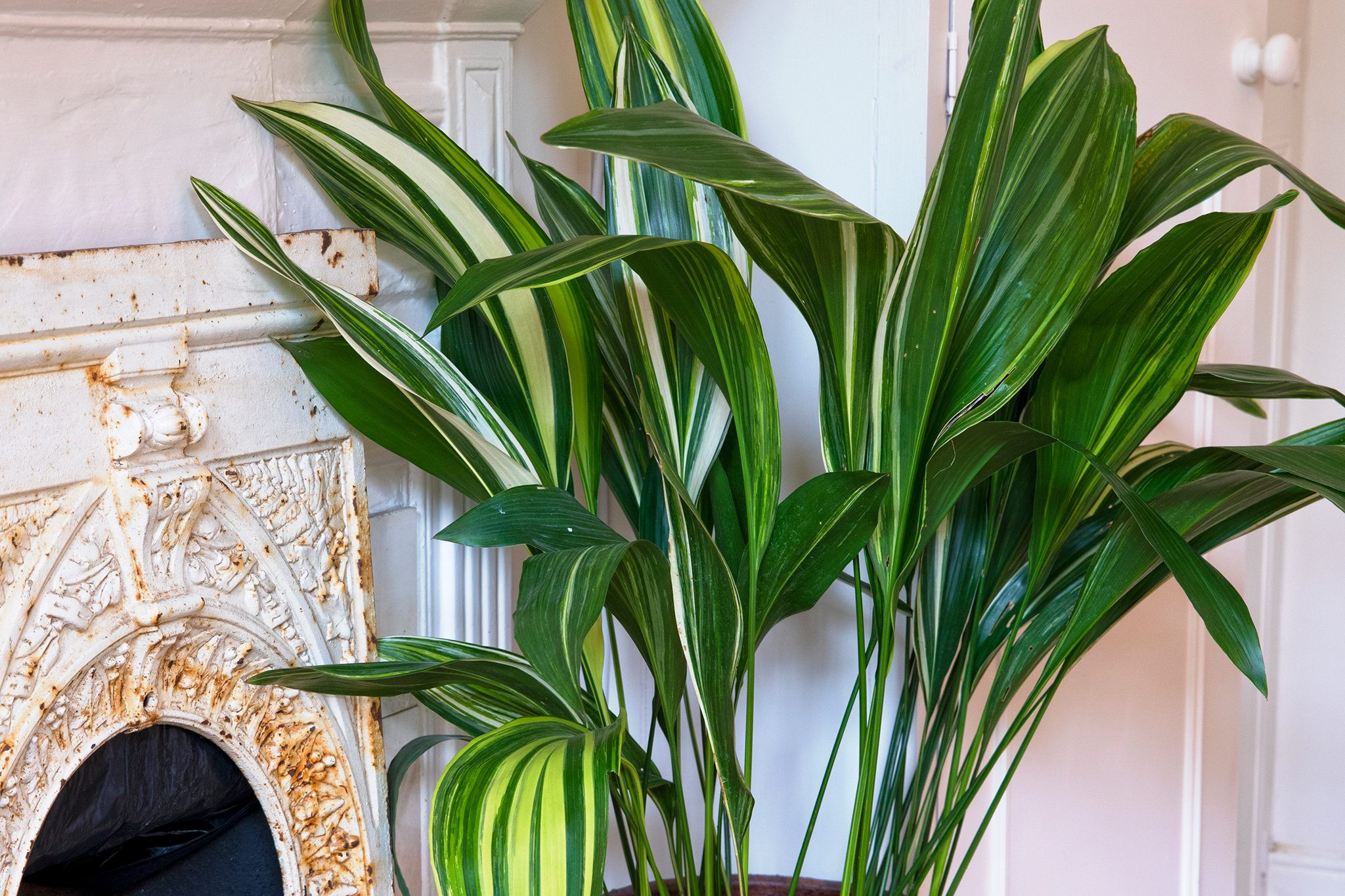 Aspidistra elatior
Aspidistra elatior
Cast iron plant, an easy-care plant, is perfect for beginners and safe for cats.
Cast iron plants are incredibly resilient and can tolerate neglect, making them perfect for beginners. They thrive in low light conditions and require minimal watering. The ASPCA lists cast iron plants as non-toxic to cats.
Care Tips:
- Light: Low to bright, indirect light
- Water: Water sparingly, allowing the soil to dry out between waterings
- Humidity: Average room humidity
Benefits: Extremely resilient, low maintenance
Chinese Money Plant (Pilea peperomioides)
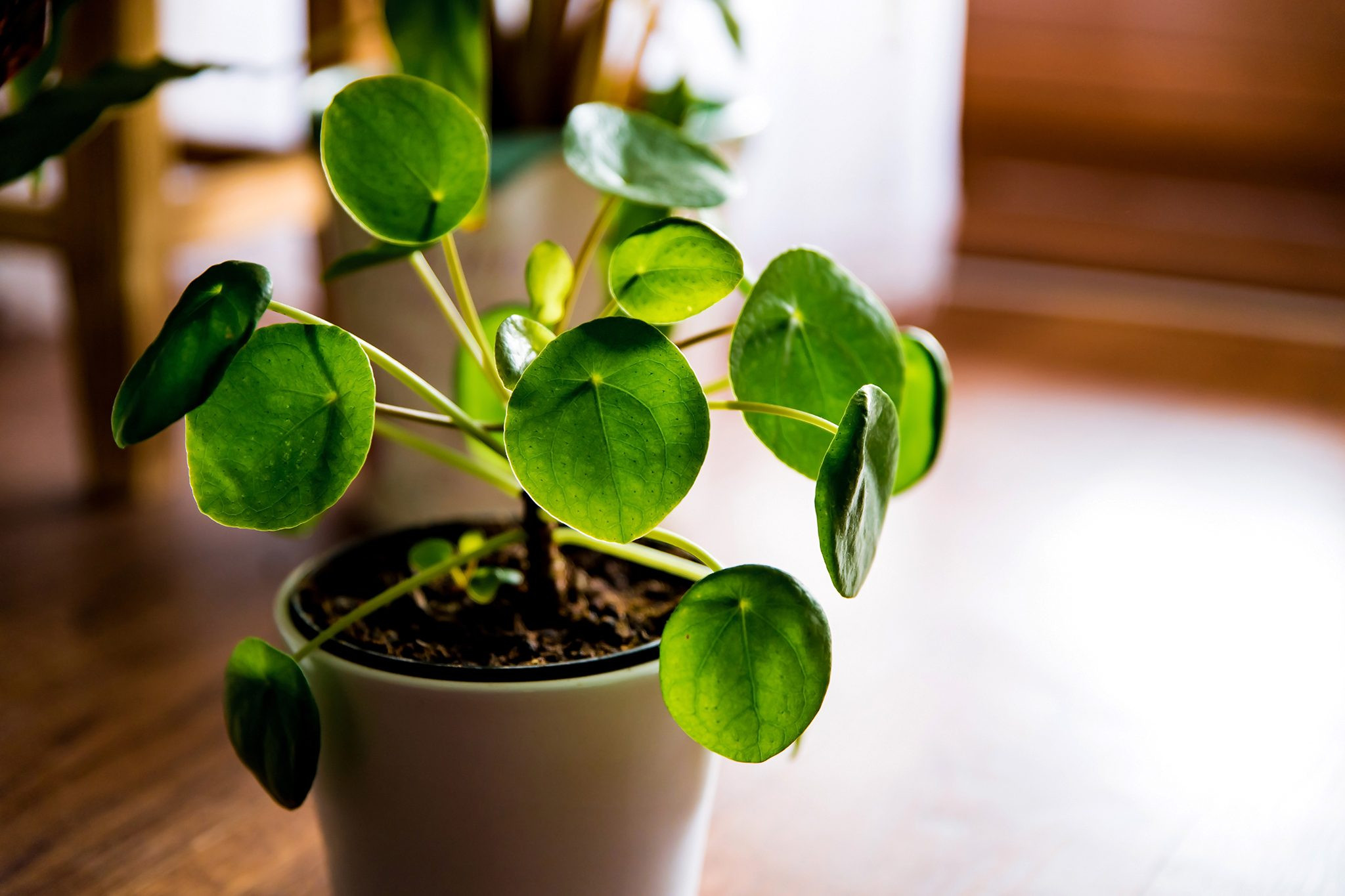 Pilea peperomioides, Chinese money plant. Getty Images.
Pilea peperomioides, Chinese money plant. Getty Images.
Chinese money plant, a low-maintenance houseplant, brings good luck and safety for cats.
Chinese money plants are known for their unique, coin-shaped leaves and are said to bring good fortune. They prefer bright, indirect light and well-draining soil. According to the ASPCA, Pilea peperomioides is non-toxic to cats.
Care Tips:
- Light: Bright, indirect light
- Water: Water when the soil dries out
- Humidity: Average room humidity
Benefits: Unique appearance, easy to propagate
Pineapple Plant (Ananas comosus)
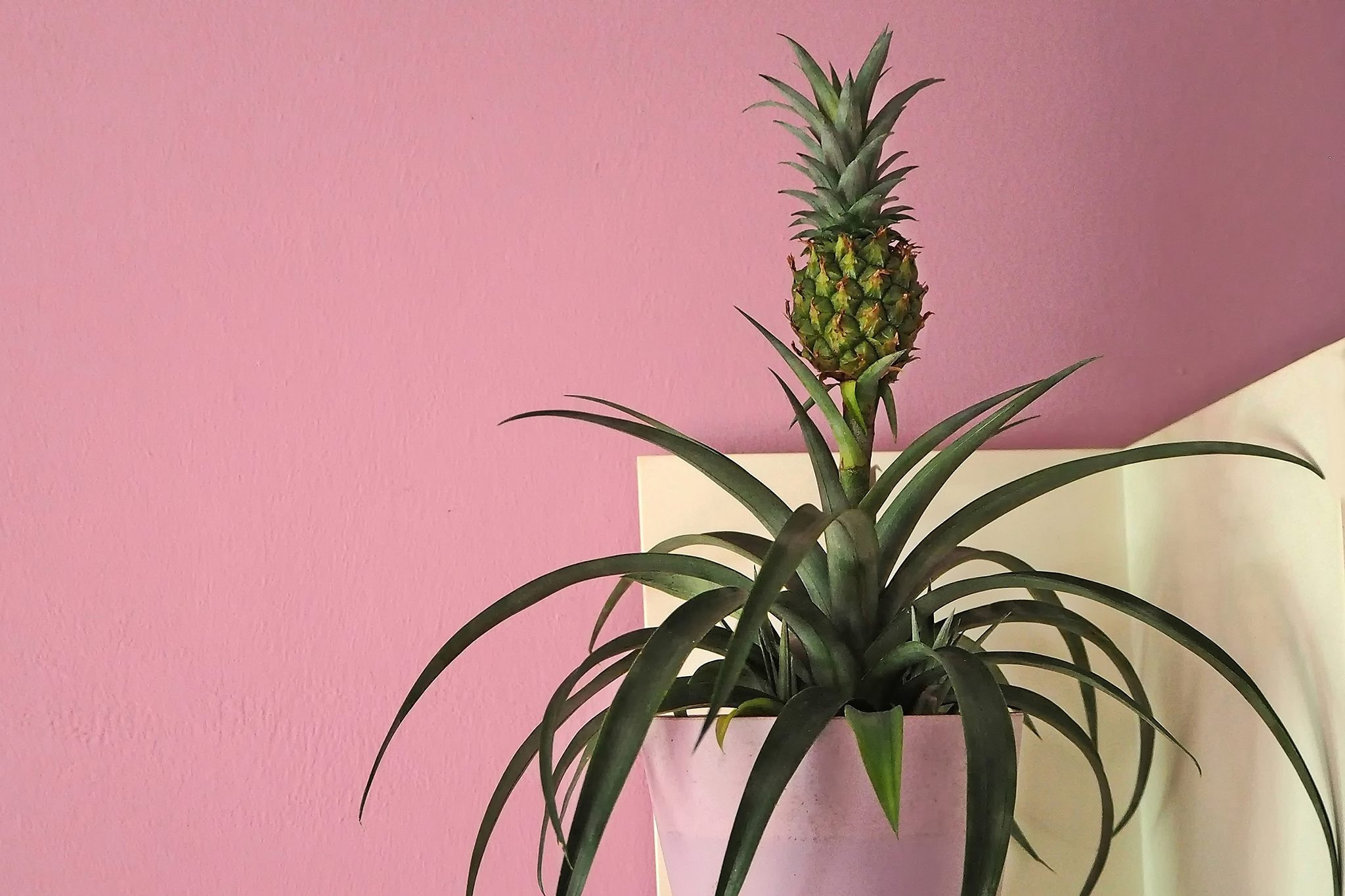 Pineapple plant. Getty images.
Pineapple plant. Getty images.
Pineapple plant, a striking houseplant, offers a tropical feel and is safe for curious cats.
Pineapple plants add a tropical vibe to any home with their spiky leaves and unique fruit. They need plenty of sunlight and well-draining soil. The ASPCA lists pineapple plants as non-toxic to cats.
Care Tips:
- Light: Direct sunlight
- Water: Water when the top inch of soil is dry
- Humidity: Average room humidity
Benefits: Tropical appearance, unique fruit
Calathea orbifolia
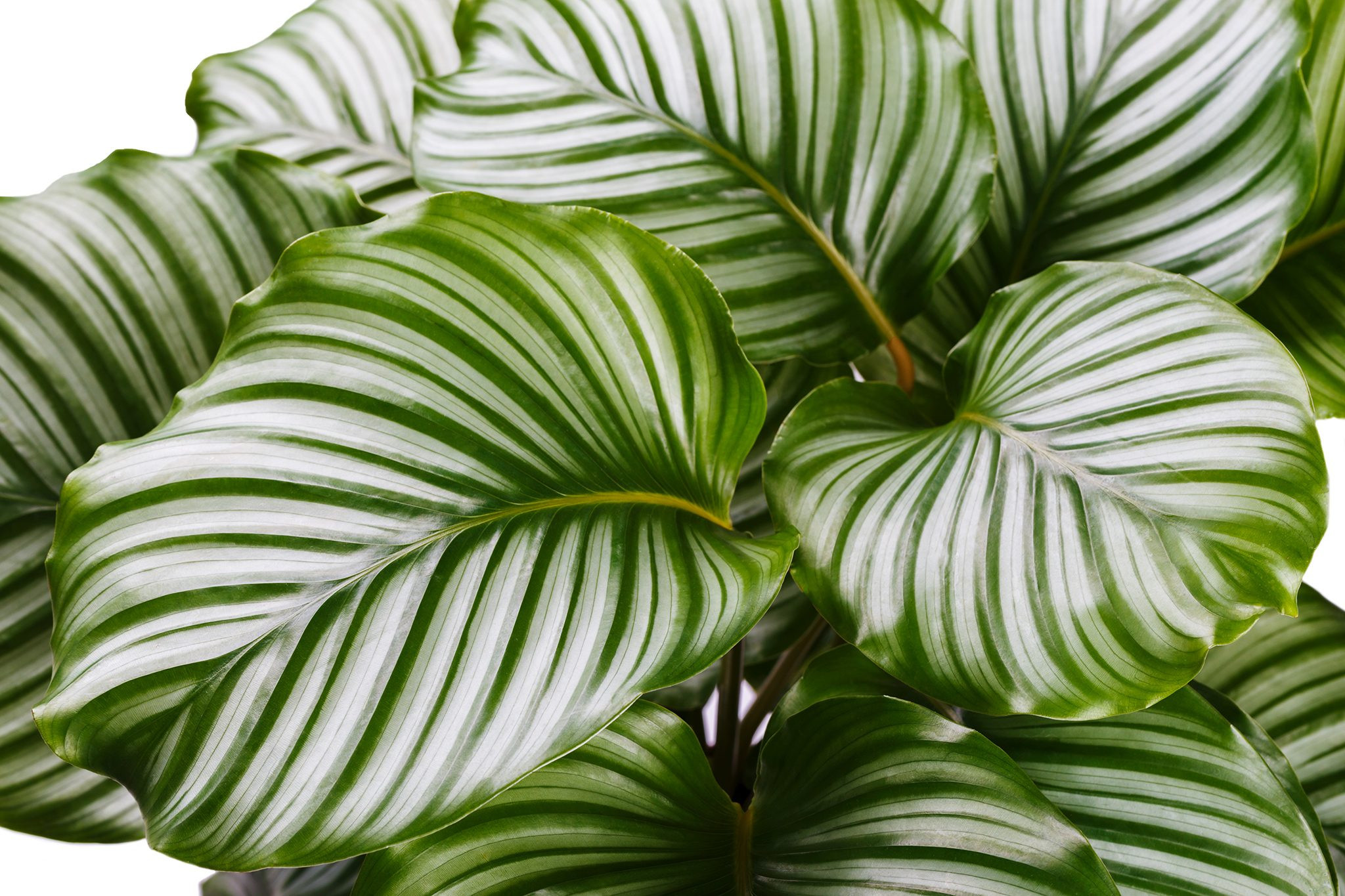 Calathea orbifolia
Calathea orbifolia
Calathea orbifolia, known as the prayer plant, adds beauty and safety with its unique leaf movements.
Calathea orbifolia is known for its striking round leaves with silvery-green stripes. It’s also called the prayer plant because its leaves fold up at night. This plant prefers bright, indirect light and moist soil. The ASPCA confirms that Calathea orbifolia is non-toxic to cats.
Care Tips:
- Light: Bright, indirect light
- Water: Keep soil moist, but not soggy
- Humidity: High humidity, mist regularly
Benefits: Beautiful foliage, unique leaf movements
String of Hearts (Ceropegia linearis subsp. woodii)
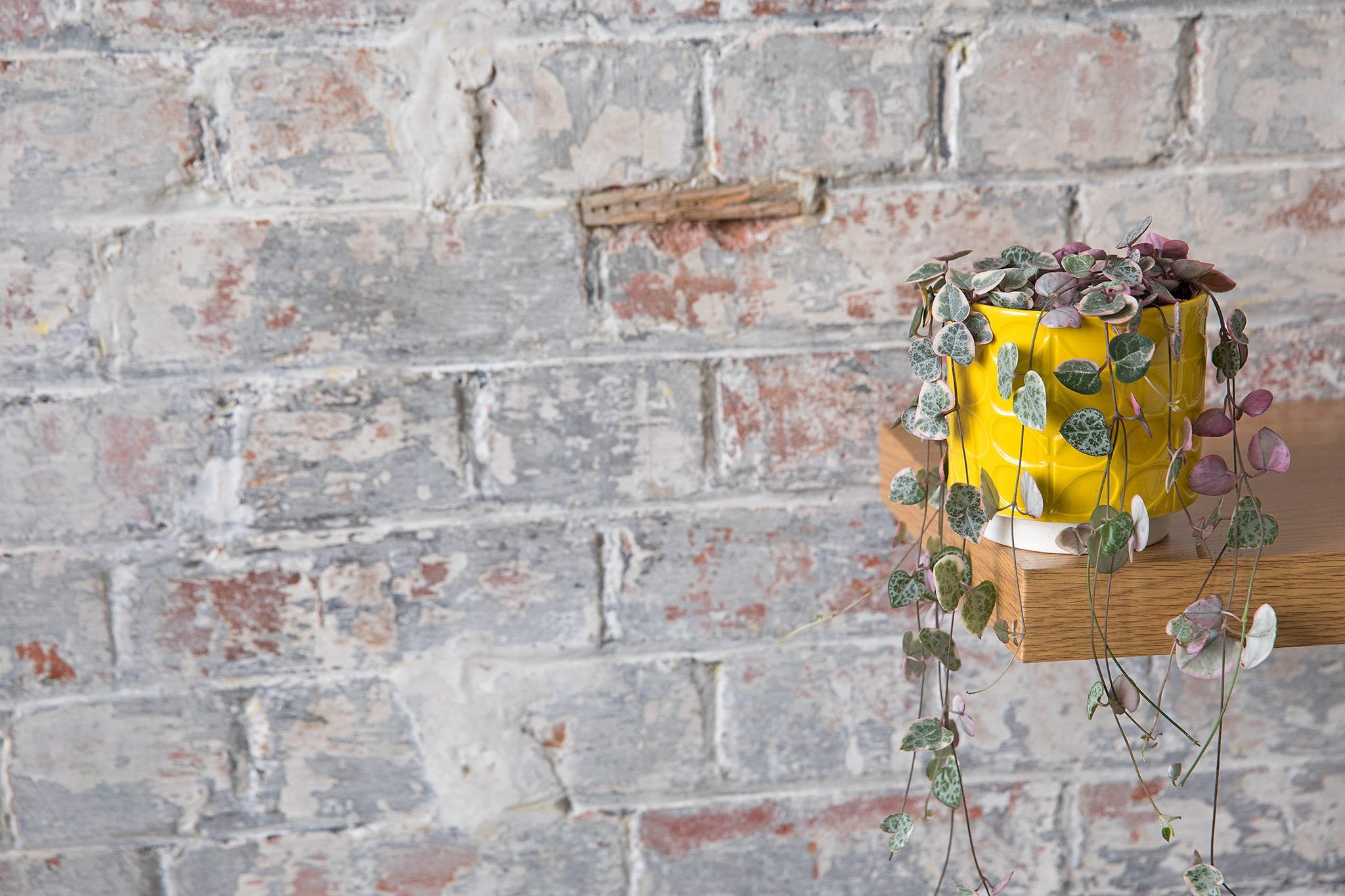 Ceropegia linearis subsp. woodii, String of Hearts
Ceropegia linearis subsp. woodii, String of Hearts
String of Hearts, with its trailing stems and heart-shaped leaves, adds charm and safety for feline friends.
String of Hearts is a beautiful trailing plant with heart-shaped leaves. It looks great in hanging baskets or on shelves where the stems can cascade down. This plant prefers bright, indirect light and well-draining soil. The ASPCA lists String of Hearts as non-toxic to cats.
Care Tips:
- Light: Bright, indirect light
- Water: Allow soil to dry out between waterings
- Humidity: Average room humidity
Benefits: Beautiful trailing stems, heart-shaped leaves
Pachira aquatica
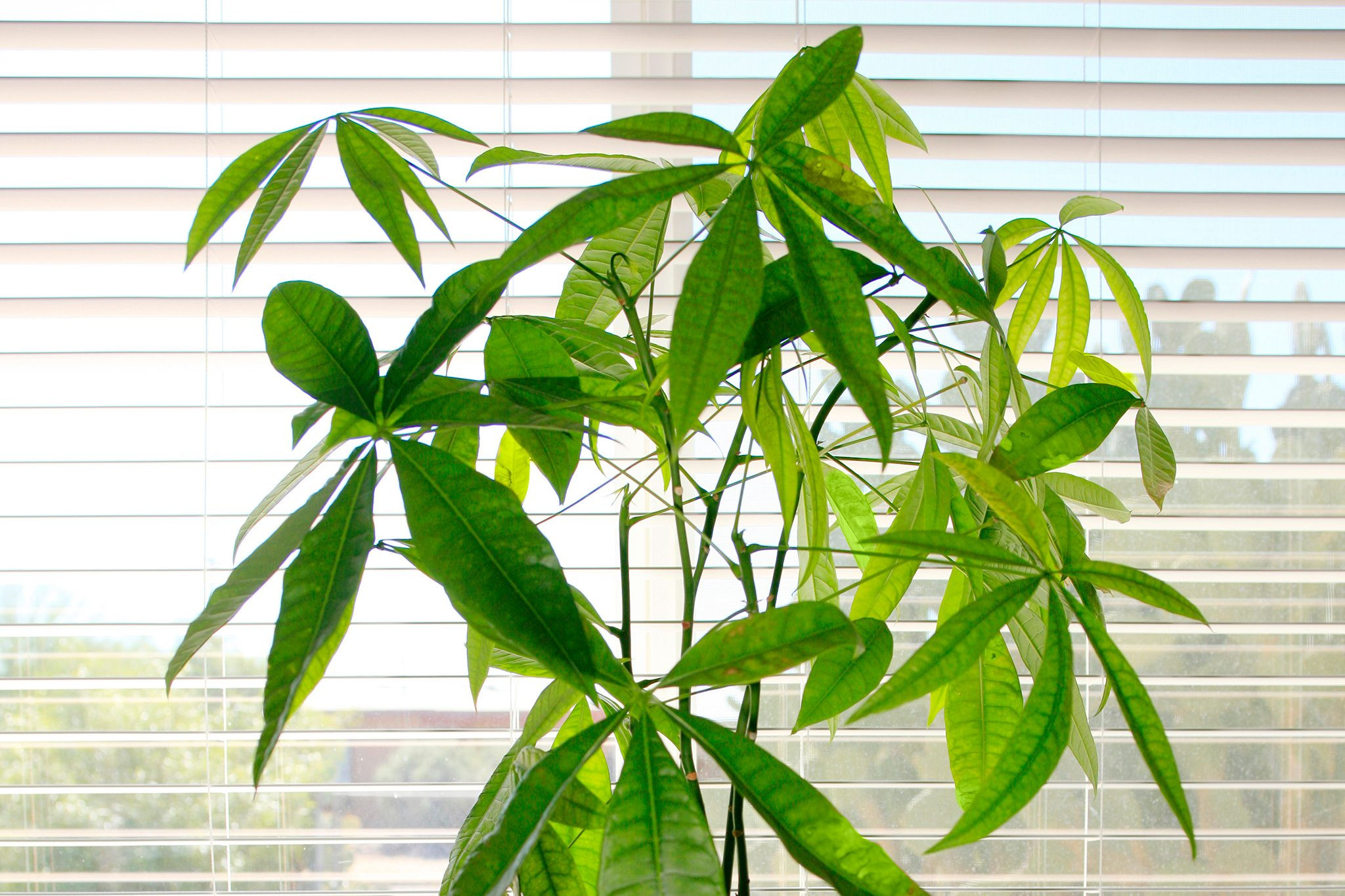 Pachira aquatica, Money tree. Getty Images.
Pachira aquatica, Money tree. Getty Images.
Pachira aquatica, known as the Money tree, brings good fortune and safety for your feline companions.
Pachira aquatica, also known as the Money Tree, is believed to bring good fortune and prosperity. This plant has a braided trunk and lush green leaves. It prefers bright, indirect light and moderate watering. The ASPCA confirms that Pachira aquatica is non-toxic to cats.
Care Tips:
- Light: Bright, indirect light
- Water: Water when the top inch of soil is dry
- Humidity: Average room humidity
Benefits: Attractive braided trunk, believed to bring good fortune
Musa acuminata ‘Dwarf Cavendish’
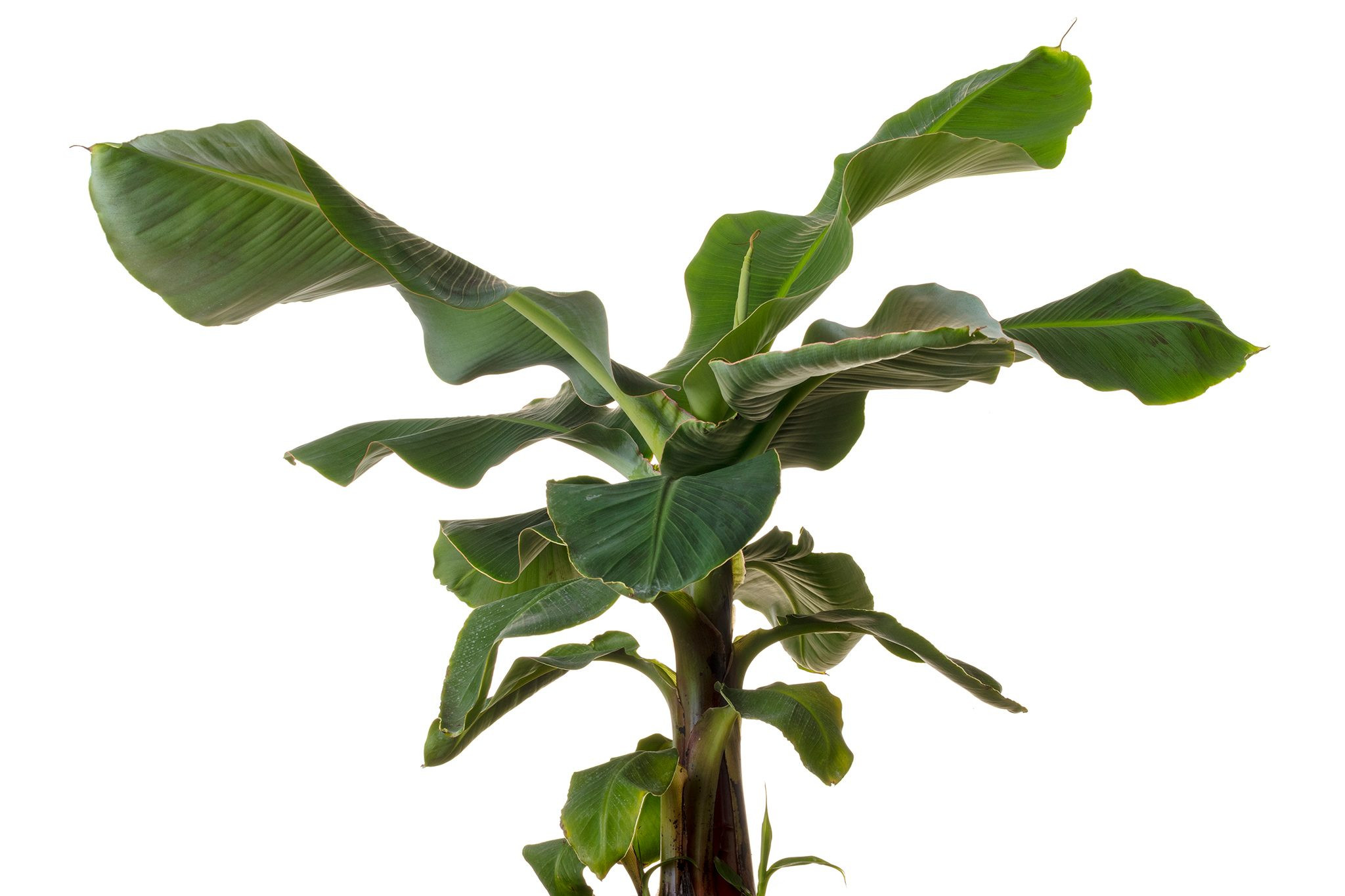 Young banana tree, Musa acuminata
Young banana tree, Musa acuminata
Musa acuminata ‘Dwarf Cavendish, with its large leaves, adds an exotic touch and is safe for cats.
Musa acuminata ‘Dwarf Cavendish’ is a compact banana plant that adds an exotic feel to indoor spaces. It features large, lush leaves and can even produce small bananas under the right conditions. This plant needs plenty of light and consistent moisture. The ASPCA lists Musa acuminata as non-toxic to cats.
Care Tips:
- Light: Plenty of light
- Water: Keep soil moist
- Humidity: High humidity
Benefits: Adds an exotic touch, large leaves
Calathea sanderiana
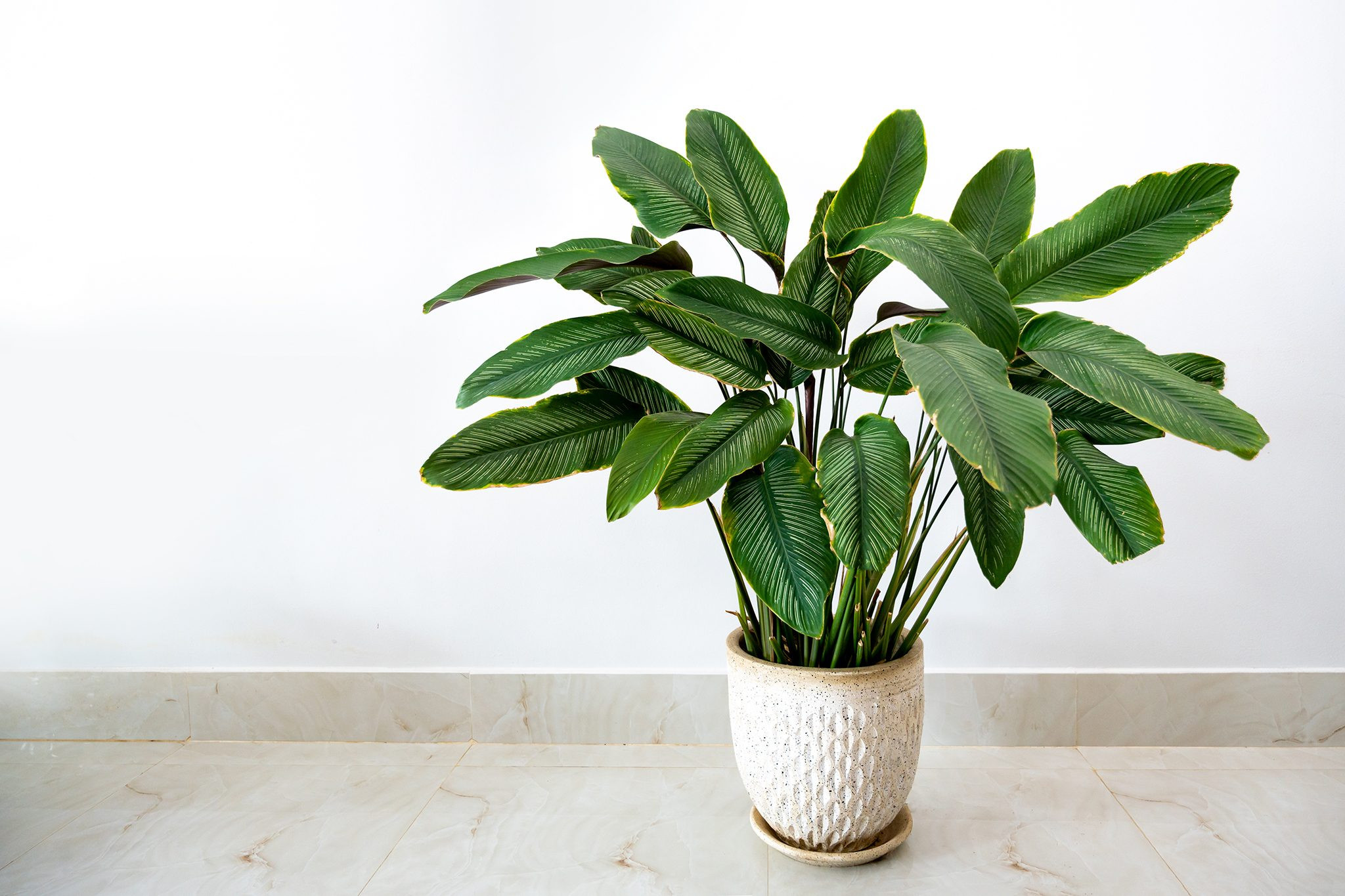 Calathea sanderiana. Getty Images.
Calathea sanderiana. Getty Images.
Calathea sanderiana, also known as the pin-stripe plant, adds color and safety to your cat-friendly home.
Calathea sanderiana, also known as the Pinstripe Calathea, is admired for its large, striking leaves with pink stripes and purple undersides. This plant thrives in warm, humid conditions with bright, indirect light. The ASPCA confirms that Calathea sanderiana is non-toxic to cats.
Care Tips:
- Light: Bright, indirect light
- Water: Water regularly when the top two inches of soil are dry
- Humidity: High humidity, mist regularly
Benefits: Striking foliage, colorful leaves
Watermelon Peperomia (Peperomia argyreia)
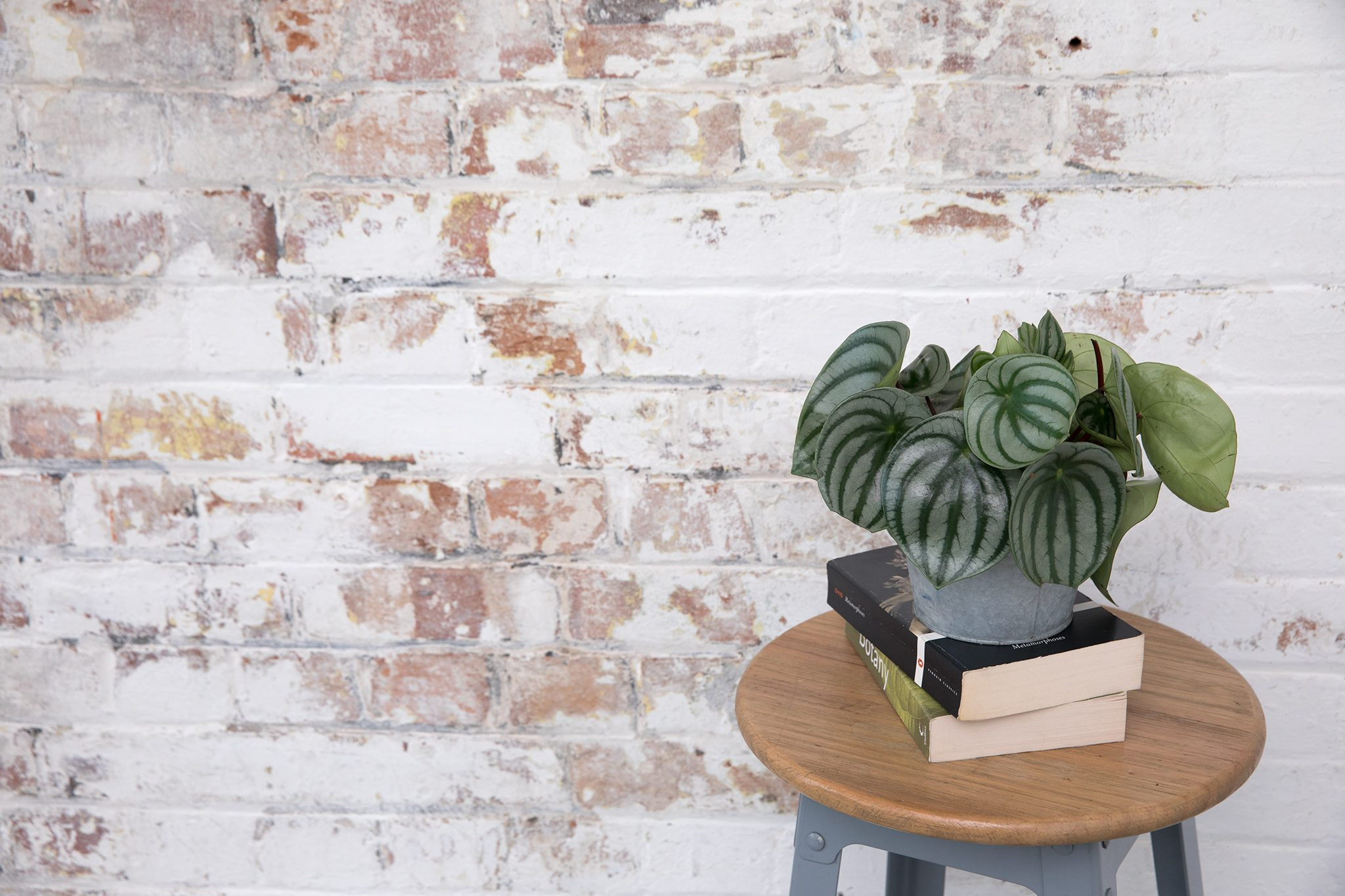 Watermelon peperomia, Peperomia argyreia
Watermelon peperomia, Peperomia argyreia
Watermelon peperomia, ideal for brightening up any space, is safe for curious cats.
Watermelon Peperomia is named for its unique leaf markings that resemble the rind of a watermelon. This compact plant is perfect for adding greenery to shelves and tabletops. It prefers bright, indirect light and moderate watering. The ASPCA lists Peperomia argyreia as non-toxic to cats.
Care Tips:
- Light: Bright, indirect light
- Water: Water when the soil is dry to the touch
- Humidity: Average room humidity
Benefits: Attractive foliage, compact size
Summary Table of Cat-Friendly Plants
| Plant Name | Light | Water | Humidity | Benefits |
|---|---|---|---|---|
| Kentia Palm | Bright, indirect | Keep compost moist | Occasional mist | Adds height and elegance, air-purifying |
| Parlour Palm | Low to bright, indirect | Water once a week | Average | Easy to care for, air-purifying |
| Boston Fern | Indirect sunlight | Keep soil moist | High, mist | Air-purifying, adds lush greenery |
| Maidenhair Fern | Bright, indirect | Keep compost moist | High, mist | Adds elegance, thrives in humid environments |
| Golden Polypody | Indirect light | Keep compost moist | High, mist | Easy to care for, striking blue-green leaves |
| Zebra Plant | Bright, indirect | Water sparingly | Low | Low maintenance, unique striped appearance |
| Christmas Cactus | Bright, indirect | Keep soil moist | Moderate | Beautiful blooms, easy to care for |
| Moth Orchid | Indirect light | Water when potting mix is dry | High | Long-lasting blooms, adds elegance |
| Cast Iron Plant | Low to bright, indirect | Water sparingly | Average | Extremely resilient, low maintenance |
| Chinese Money Plant | Bright, indirect | Water when soil dries out | Average | Unique appearance, easy to propagate |
| Pineapple Plant | Direct sunlight | Water when top inch of soil is dry | Average | Tropical appearance, unique fruit |
| Calathea orbifolia | Bright, indirect | Keep soil moist | High, mist | Beautiful foliage, unique leaf movements |
| String of Hearts | Bright, indirect | Allow soil to dry out | Average | Beautiful trailing stems, heart-shaped leaves |
| Pachira aquatica | Bright, indirect | Water when top inch of soil is dry | Average | Attractive braided trunk, believed to bring good fortune |
| Musa acuminata ‘Dwarf Cavendish’ | Plenty of light | Keep soil moist | High | Adds an exotic touch, large leaves |
| Calathea sanderiana | Bright, indirect | Water regularly when top two inches are dry | High, mist | Striking foliage, colorful leaves |
| Watermelon Peperomia | Bright, indirect | Water when soil is dry to the touch | Average | Attractive foliage, compact size |
3. How to Protect Your Cat from Toxic Plants
Even with a selection of non-toxic plants, it’s important to take steps to protect your cat from potentially harmful plants.
Identify and Remove Toxic Plants
The first step is to identify any toxic plants currently in your home and remove them. The ASPCA has a comprehensive list of toxic and non-toxic plants that can help you identify potentially dangerous plants.
Keep Plants Out of Reach
Place your plants in areas that are inaccessible to your cat. Hanging planters, high shelves, or enclosed terrariums can help keep your plants safe from curious pets.
Use Deterrents
If your cat is determined to nibble on your plants, consider using deterrents such as:
- Bitter Apple Spray: This non-toxic spray has a bitter taste that discourages cats from chewing on plants.
- Citrus Peels: Cats generally dislike the smell of citrus, so placing orange or lemon peels around your plants can deter them.
- Physical Barriers: Use netting or decorative stones to create a barrier around the base of your plants.
Provide Alternatives
Offer your cat alternative options for chewing and exploring. Cat-friendly grass, catnip, or interactive toys can redirect their attention away from your houseplants.
4. Understanding Cat Behavior Around Plants
To effectively protect your plants and your cat, it’s important to understand why cats might be interested in your houseplants.
Natural Instincts
Cats are natural hunters and explorers. Their curiosity often leads them to investigate and interact with their environment, including houseplants. Chewing on plants can also be a way for cats to relieve boredom or stress.
Texture and Movement
The texture and movement of plants can be appealing to cats. Dangling leaves or swaying stems can trigger their hunting instincts, leading them to bat at or chew on the plants.
Nutritional Deficiencies
In some cases, cats may chew on plants due to nutritional deficiencies. If your cat is consistently eating plants, consult with your veterinarian to ensure they are getting a balanced diet.
Tips to Discourage Plant Eating
- Provide Plenty of Toys: Keep your cat entertained with a variety of toys to prevent boredom.
- Regular Playtime: Engage in regular play sessions to satisfy their hunting instincts.
- Cat Grass: Offer cat-friendly grass as a safe alternative for chewing.
- Positive Reinforcement: Reward your cat for ignoring your houseplants.
5. Incorporating Plants into Your Home Decor
Adding plants to your home decor can enhance the aesthetic appeal of your living space while creating a calming and inviting atmosphere.
Choosing the Right Plants for Your Space
Consider the amount of light, humidity, and space available when selecting plants for your home. Plants like snake plants and ZZ plants are great for low-light conditions, while ferns and orchids thrive in humid environments.
Creating Eye-Catching Displays
Group plants together to create visually appealing displays. Use a variety of sizes, shapes, and textures to add interest. Consider using decorative pots and planters to complement your home decor.
Hanging Plants
Hanging plants are a great way to add greenery to your home without taking up valuable floor space. String of pearls, spider plants, and pothos are all excellent choices for hanging planters.
Vertical Gardens
Vertical gardens are a unique and space-saving way to incorporate plants into your home. They can be created using a variety of materials, such as wooden pallets, fabric pockets, or modular systems.
6. Sourcing Cat-Friendly Plants
Finding cat-friendly plants is easier than you might think. Here are some reliable sources to help you build your collection:
Local Nurseries and Garden Centers
Local nurseries and garden centers are excellent places to find a wide variety of plants. The staff can provide valuable advice on plant care and help you choose the best options for your home.
Online Retailers
Many online retailers specialize in houseplants and offer a convenient way to shop from the comfort of your home. Be sure to check customer reviews and plant descriptions to ensure you are purchasing non-toxic options.
Farmers’ Markets
Farmers’ markets often feature local plant vendors selling a variety of houseplants. This is a great way to support local businesses and find unique and interesting plants.
Plant Swaps
Consider participating in local plant swaps to exchange plants with other enthusiasts. This is a fun and cost-effective way to expand your collection and meet new people.
7. Expert Tips for Plant and Cat Coexistence
To ensure a harmonious relationship between your cats and plants, follow these expert tips:
Consult with a Veterinarian
If you are unsure about the safety of a particular plant, consult with your veterinarian. They can provide valuable advice based on your cat’s specific needs and health history.
Monitor Your Cat’s Behavior
Pay close attention to your cat’s behavior around your plants. If you notice them chewing or showing excessive interest, take steps to deter them or move the plants to a safer location.
Regular Plant Maintenance
Keep your plants healthy and well-maintained. Remove any dead or dying leaves, as these can be more enticing to cats.
Create a Cat-Friendly Space
Provide your cat with their own dedicated space, complete with comfortable bedding, toys, and scratching posts. This can help reduce their interest in your plants.
8. Common Misconceptions About Plants and Cats
There are several misconceptions about plants and cats that can lead to confusion and potential harm.
Myth: All Houseplants are Toxic to Cats
Not all houseplants are toxic to cats. Many plants are perfectly safe and can coexist peacefully with your feline companions.
Myth: Cats Know Which Plants are Safe to Eat
Cats do not have an innate ability to distinguish between toxic and non-toxic plants. They rely on their curiosity and instincts, which can sometimes lead them to ingest harmful substances.
Myth: A Small Amount of a Toxic Plant Won’t Hurt My Cat
Even a small amount of a toxic plant can cause adverse reactions in cats. It’s important to remove all toxic plants from your home to ensure your pet’s safety.
Myth: Only Indoor Cats are at Risk
Both indoor and outdoor cats are at risk of plant poisoning. Outdoor cats may encounter toxic plants in gardens or natural environments.
9. The Benefits of Having Plants and Cats in Your Home
Having both plants and cats in your home can bring numerous benefits to your physical and mental well-being.
Improved Air Quality
Plants are natural air purifiers, removing toxins and pollutants from the air. This can improve the overall air quality in your home, reducing the risk of respiratory issues.
Stress Reduction
Studies have shown that being around plants can reduce stress and improve mood. The presence of greenery can create a calming and relaxing atmosphere in your home.
Companionship
Cats provide companionship and emotional support. Their playful antics and affectionate nature can bring joy and laughter to your life.
Aesthetic Appeal
Plants add beauty and visual interest to your home decor. They can transform any space into a vibrant and inviting oasis.
10. Frequently Asked Questions (FAQs) About Cat-Safe Plants
1. What indoor plants are safe for cats to be around?
Many indoor plants are safe for cats, including Kentia palms, parlour palms, Boston ferns, maidenhair ferns, zebra plants, and Christmas cacti. These plants are non-toxic and can coexist peacefully with your feline companions.
2. Are spider plants poisonous to cats?
While spider plants are not highly toxic, they can cause mild stomach upset if ingested by cats. It’s best to keep spider plants out of reach to prevent any potential discomfort.
3. What should I do if my cat eats a poisonous plant?
If you suspect your cat has eaten a poisonous plant, contact your veterinarian or the ASPCA Animal Poison Control Center immediately. Provide as much information as possible about the plant and the symptoms your cat is experiencing.
4. How can I keep my cat from eating my houseplants?
To keep your cat from eating your houseplants, try using deterrents such as bitter apple spray or citrus peels. You can also place your plants in areas that are inaccessible to your cat, such as hanging planters or high shelves.
5. Are succulents safe for cats?
Some succulents are safe for cats, such as zebra plants (Haworthia fasciata). However, other succulents, like aloe vera, are toxic and should be avoided.
6. Can cats eat cat grass?
Yes, cat grass is a safe and healthy treat for cats. It can help with digestion and provide essential nutrients.
7. Where can I find more information about cat-safe plants?
You can find more information about cat-safe plants on the ASPCA website or by consulting with your veterinarian.
8. Is it okay to have plants in the bedroom if I have a cat?
Yes, it’s perfectly fine to have plants in the bedroom if you have a cat, as long as you choose non-toxic options. Plants like Boston ferns and moth orchids can add beauty and improve air quality in your sleeping space.
9. How often should I water my cat-safe plants?
The watering frequency for your cat-safe plants will depend on the specific plant and its needs. Generally, it’s best to water when the top inch of soil is dry to the touch.
10. Can I use fertilizer on my houseplants if I have cats?
Yes, you can use fertilizer on your houseplants if you have cats, but be sure to choose a pet-safe option. Follow the instructions carefully and avoid over-fertilizing, as this can be harmful to both your plants and your pets.
At solcat.net, we’re committed to providing you with the most up-to-date information on cat care and safety. By choosing non-toxic plants and taking the necessary precautions, you can create a beautiful and safe environment for both you and your feline friend.
Ready to transform your home into a cat-friendly paradise? Visit solcat.net for more tips, advice, and resources. Connect with a community of cat lovers and discover the joy of living with happy, healthy cats and beautiful plants. Contact us at Address: 950 Alaskan Way, Seattle, WA 98104, United States. Phone: +1 (206) 386-4000. Website: solcat.net.

